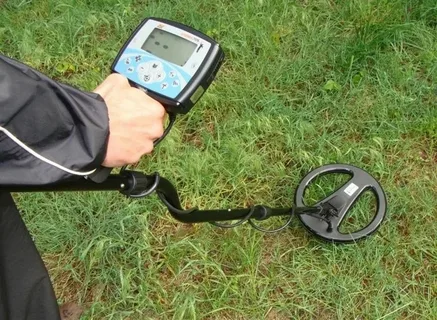Mining in the USA has long been a vital sector of the country’s economy, providing essential resources for industry and infrastructure. As we look to the future, the mining industry faces both opportunities and challenges in the rapidly changing landscape of technology, regulation, and environmental awareness. In this article, we will delve into the future of mining in the USA, exploring the potential for growth and innovation, as well as the obstacles that must be navigated. Join us as we examine the current state and future prospects of mining in the USA, and the key factors that will shape its trajectory.
Exploring the Future of Mining in the USA: Opportunities and Challenges is a comprehensive report that examines the current state of the mining industry in the United States and explores the potential opportunities and challenges that lie ahead. The report delves into various factors impacting the sector, such as technological advancements, environmental regulations, and market trends, in order to provide a nuanced understanding of the industry’s future. It also offers insights into potential growth areas and investment opportunities, as well as the obstacles and risks that may need to be navigated. Overall, the report serves as a valuable resource for stakeholders and decision-makers in the mining industry who are seeking to anticipate and prepare for the future landscape of mining in the USA.
The Economic Impact of Mining in the USA

Mining has long been a significant contributor to the US economy, with the extraction of coal, metals, and other minerals creating jobs and generating revenue. In 2019, the mining industry directly employed over 600,000 people, while supporting millions of additional jobs in related industries. The economic impact of mining extends beyond employment, as it also contributes to local and state tax revenues, infrastructure development, and the overall economic well-being of communities where mining activities take place.
The United States is a leading producer of a wide range of minerals, including coal, copper, gold, and other metals. These resources are essential for manufacturing, construction, and energy production, making mining a crucial component of the nation’s industrial and economic infrastructure. Additionally, the US is a major exporter of minerals, providing valuable revenue from international trade.
Despite its economic significance, mining also presents challenges, particularly in terms of environmental impact and worker safety. Striking a balance between economic benefits and environmental stewardship is an ongoing concern for the industry and regulatory agencies.
Overall, the economic impact of mining in the USA is substantial, providing jobs, revenue, and essential resources for various sectors of the economy. Additionally, the industry plays a vital role in maintaining the country’s global competitiveness and energy security.
Challenges and Opportunities in the USA Mining Industry

Challenges in the USA mining industry include navigating compliance and regulatory requirements, addressing environmental concerns, and adapting to fluctuations in commodity prices. Additionally, there is a need for continued investment in technology and infrastructure to modernize operations and improve safety.
Opportunities in the USA mining industry include tapping into new mineral reserves, such as lithium and rare earth elements, to meet the growing demand for renewable energy technologies. There is also potential for growth in the extraction of metals used in electronics and electric vehicles. Furthermore, advancements in automation and data analytics present opportunities to enhance productivity and efficiency in mining operations.
The History of Mining in the United States

The history of mining in the United States dates back to the 1600s when Native Americans and early European settlers began extracting valuable minerals such as gold, silver, and copper. However, it wasn’t until the 19th century that the industry experienced significant growth with the discovery of large deposits of coal, iron, and other metals.
Mining played a crucial role in the economic development of the United States, particularly during the industrial revolution, as it provided the raw materials necessary for manufacturing and infrastructure construction. The California Gold Rush in the mid-1800s and the subsequent silver and copper booms in the western states further fueled the expansion of the industry.
Throughout the 20th century, mining continued to be a major contributor to the nation’s economy, although it also faced numerous challenges such as labor disputes, environmental concerns, and fluctuations in global commodity prices. Despite these challenges, the United States remains a leading producer of a wide range of minerals, including coal, copper, iron ore, and various industrial minerals.
In recent decades, the mining industry has undergone significant technological advancements and regulatory changes aimed at improving safety, environmental sustainability, and operational efficiency. Today, mining in the United States is a highly sophisticated and heavily regulated industry that continues to play a vital role in the national economy.
Technological Advances in USA Mining Operations

Technological advances in USA mining operations have significantly improved the efficiency and safety of mining activities. These advances include the use of autonomous vehicles and drones for surveying and exploration, advanced sensors and monitoring systems for real-time data collection, and the implementation of artificial intelligence and machine learning algorithms for predictive maintenance and process optimization. Additionally, advancements in 3D printing and robotics have also been integrated into mining operations to streamline production and reduce costs. These technological innovations have not only increased productivity but have also reduced the risk of accidents and improved environmental sustainability in the mining industry.
Environmental Concerns Surrounding Mining in the USA
The environmental concerns surrounding mining in the USA include the destruction of natural habitats, pollution of air and water, and the generation of large amounts of waste. Mining can lead to soil erosion, deforestation, and loss of biodiversity as land is cleared for extraction activities. Additionally, the use of toxic chemicals such as cyanide and mercury in mining processes can contaminate nearby water sources and harm aquatic ecosystems.
Air pollution is also a significant issue, as mining operations release particulate matter, nitrogen oxides, and sulfur dioxide into the atmosphere, contributing to smog and acid rain formation. Furthermore, the disposal of mining waste, including tailings and slag, can result in the leaching of heavy metals and other contaminants into the surrounding environment, posing risks to both human health and the ecosystem.
In response to these concerns, regulations and mitigation measures have been implemented to minimize the environmental impact of mining activities. These include reclamation requirements to restore mined areas, water management strategies to prevent contamination, and the development of cleaner technologies to reduce emissions and waste generation. However, ongoing vigilance and enforcement are necessary to ensure that mining operations are conducted in an environmentally responsible manner.
Employment Trends in the USA Mining Sector
According to the U.S. Bureau of Labor Statistics, employment in the mining sector has exhibited a gradual decline in recent years. This is primarily due to factors such as technological advancements leading to increased automation and efficiency in mining operations. Additionally, environmental regulations and shifts in energy trends have also had an impact on employment in the sector. However, despite these challenges, the mining industry continues to be a significant contributor to the U.S. economy, providing essential raw materials for various industries. As the sector continues to evolve, it is likely that employment trends will continue to be influenced by a combination of technological advancements, regulatory changes, and market demands.
The Future of Mining Exploration in the USA
The future of mining exploration in the USA will likely continue to be driven by technological advancements and the demand for critical minerals used in various industries. The industry is expected to see increased investment in innovative exploration techniques, such as remote sensing technologies and data analytics, to identify potential mineral deposits. Additionally, there may be a shift towards more sustainable and environmentally responsible mining practices, as well as increased collaboration between government, industry, and academia to meet the country’s mineral resource needs. The exploration for new mineral deposits will also be influenced by regulatory and policy changes, as well as global market trends and geopolitical considerations. Overall, the future of mining exploration in the USA will be shaped by a combination of technological, economic, and environmental factors.
Mineral Resources and Reserves in the USA
Mineral resources in the USA include coal, copper, gold, iron ore, lead, molybdenum, phosphate rock, rare earth elements, silver, uranium, and zinc. The country also has significant reserves of natural gas and oil.
The United States Geological Survey (USGS) provides detailed information on mineral resources and reserves in the USA. The USGS conducts extensive research and analysis to assess the availability of various minerals and to provide reliable estimates of reserves.
The USGS also compiles data on the production, consumption, and trends in mineral resources in the USA. This information is essential for policymakers, industry professionals, and investors to make informed decisions about mineral exploration, development, and trade.
Overall, the USA is rich in mineral resources and has substantial reserves of various critical minerals essential for its economy and national security. The USGS plays a crucial role in assessing and reporting on the country’s mineral resources and reserves to support informed decision-making and sustainable resource management.
Regulatory Framework for Mining in the United States
The regulatory framework for mining in the United States is primarily governed by the federal government through agencies such as the Department of the Interior’s Bureau of Land Management, the Department of Agriculture’s Forest Service, and the Environmental Protection Agency. State governments also play a significant role in regulating mining activities within their respective jurisdictions.
The regulatory framework includes laws and regulations pertaining to environmental protection, mineral rights, land use, occupational safety and health, and community engagement. The regulatory process typically involves obtaining permits and complying with various environmental and safety standards.
Some of the key federal laws and regulations that govern mining activities in the United States include the Mine Safety and Health Act, the National Environmental Policy Act, the Clean Water Act, and the Surface Mining Control and Reclamation Act.
Overall, the regulatory framework aims to ensure responsible and sustainable mining practices that minimize environmental impacts, protect worker safety, and engage local communities. Compliance with these regulations is crucial for companies operating in the mining sector to avoid legal and financial repercussions.
Sustainable Practices in the USA Mining Industry
See also: american mining company
One sustainable practice in the USA mining industry is the use of advanced technologies to minimize environmental impact. This includes the implementation of advanced equipment and machinery that reduces air and water pollution, and the use of cutting-edge monitoring systems to track energy usage and emissions. Additionally, many mining companies in the USA are investing in renewable energy sources such as solar and wind power to reduce their reliance on fossil fuels and lessen their carbon footprint.
Another sustainable practice is the implementation of responsible mining practices that prioritize the health and safety of workers, as well as the local communities and ecosystems. This includes adhering to strict regulations and standards for worker safety, and collaborating with local stakeholders to ensure that mining activities do not harm the surrounding environment or disrupt the lives of nearby communities. Additionally, some mining companies are prioritizing the reclamation and restoration of mining sites to their natural state after operations have ceased, in order to minimize long-term environmental impact.
Furthermore, the USA mining industry is also focusing on sustainable water management practices, such as the responsible use and recycling of water in mining operations, and implementing measures to prevent contamination of local water sources.
Overall, the USA mining industry is increasingly embracing sustainable practices to minimize its environmental footprint and prioritize the well-being of workers and local communities. These efforts demonstrate a commitment to responsible and ethical mining practices, and contribute to the overall sustainability of the industry.










